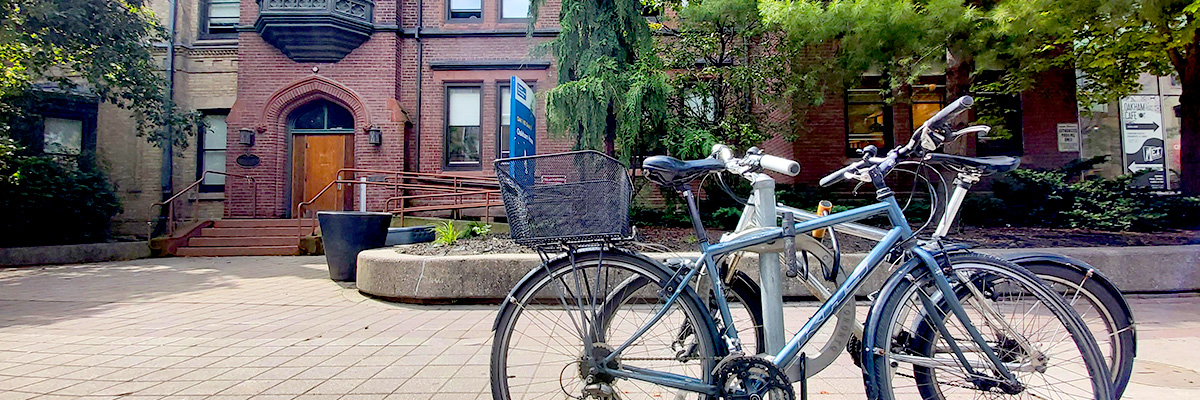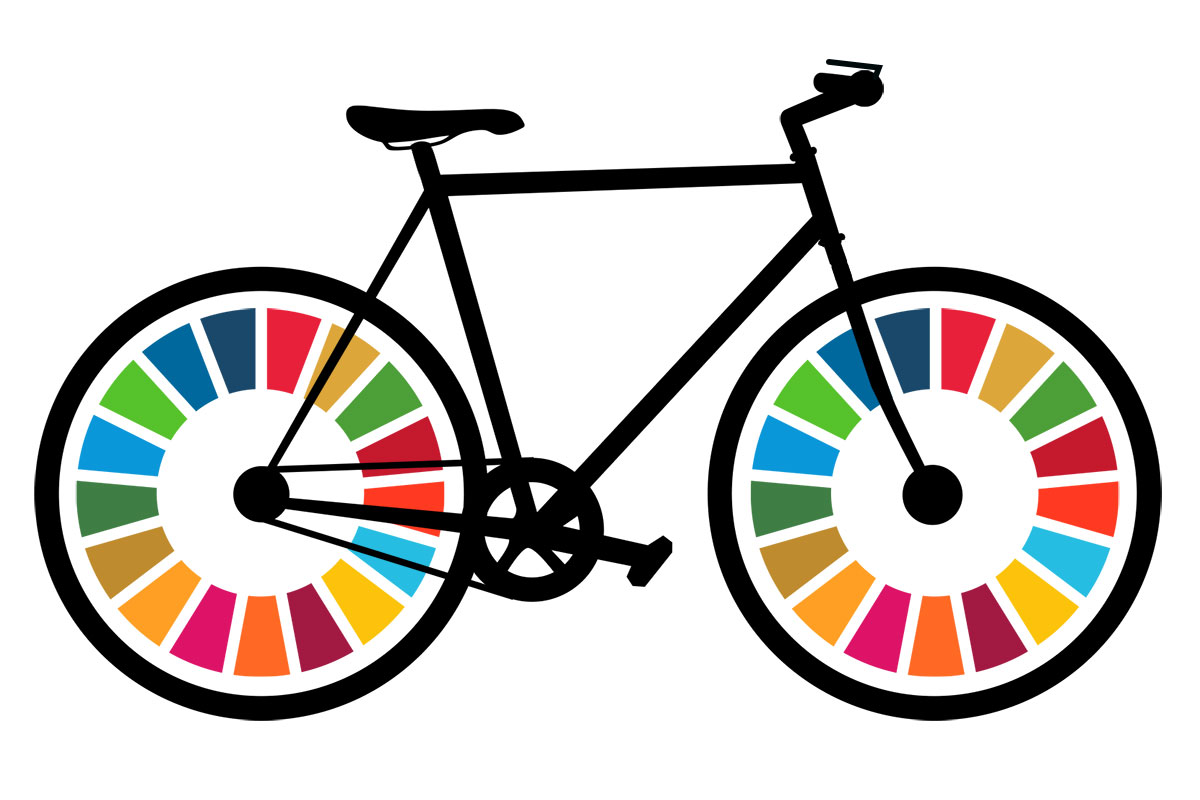Cycling to Campus

Our travel choices have an environmental impact and cycling as an eco-friendly, health-conscious and cost-effective option for day-to-day commuting. Cycling to campus offers our community an opportunity to take advantage of the physical and mental health benefits of exercise with sustainable day-to-day practices.
At TMU, supporting cycling and other active transportation is a priority of our Campus Master Plan in alignment with the Net-Zero Emissions goal of our Sustainability Action Plan. It’s an important part of TMU’s transportation mix.
Beginners’ resources to get started
Our urban campus allows us to take advantage of the city bicycle infrastructure augmented with TMU-owned amenities to make cycling an easy option for sustainable transportation to, from and around the campus.
The City of Toronto has been expanding their cycling route network and it currently consists of approximately 500 km of major city-wide cycling routes. Key routes are plowed in winter and with the right clothing and equipment it is possible to commute by bicycle through all seasons across the downtown core.
- The Toronto Cycling Map (external link) map is available for download or for free from libraries, recreation centres or bike shops across the city.
- Bicycles are allowed on TTC vehicles (external link) on GO Transit (external link) during non-peak times and cycling to your local transit stations is a great way to reduce your travel time.
Dress in comfortable clothing and remember to give yourself extra time if you need to change from light-workout, commuter wear to your campus-casual outfit. A good commuting experience includes these essentials and extra tips:
- Always wear a helmet! Make sure your helmet is fitted correctly and has the chin strap done up tight enough for the helmet to stay in place if you fall. If your helmet is ever subject to an impact — either from a fall or misuse — replace it.
- Be seen and heard! Lights, reflectors and a bell or horn are required in Ontario (external link) . Consider a reflective vest for night riding.
- Protect your eyes from wind and road grit with sunglasses in summer or clear glasses in winter.
- Use an ankle strap for your trouser cuffs and tuck in your laces to prevent anything getting caught in your chain.
- Use a pannier or basket that keeps your belongings secure and weather-protected.
- If you have a locker or personal storage, consider keeping a travel toiletry kit on campus to re-apply deodorant, make-up and restyle your hair. You may be more comfortable if you have the opportunity to freshen up before your day begins.
TMU community members can choose from over 1,100 outdoor parking options such as TMU-owned or city-owned bike racks or post-and-ring bike parking available on campus or nearby.
Complementing the university’s exterior bike parking, TMU’s Parking Services offers 98 indoor, permit bicycle parking spaces in the basement level of the Daphne Cockwell Health Sciences Complex (DCC).
Bicycle theft can be more than a financial loss and inconvenience. For some, a bicycle is their main mode of affordable transportation around the city and its loss creates an undue hardship. Keep your bicycle secure with a good lock at an immovable bike rack and take accessories with you.
Benefits of cycling to campus
Cycling produces zero emissions, helping to reduce air pollution and greenhouse gas emissions in the city. Net-zero emissions are crucial in combating climate change. A 2022 study determined that choosing a bike over a car just once a day reduces the average person's carbon emissions from transportation by 67% (external link) .
Bike lanes have a per-person traffic capacity of over six times that of vehicular lanes on average. Due to heavy vehicular traffic congestion and gridlock downtown, cycling across the downtown core is frequently faster than the same trip by car. Replacing a car trip with a bicycle trip saves the traveler nearly $2/km (external link) according to CAA National, or an average of $50 per week (external link) for office workers.
How cycling supports Sustainable Development Goals (SDGs)

Cycling is an affordable and simple mode of transport that helps to provide access to education, employment, food markets and community social activities in both urban and rural areas. It offers the opportunity for individuals and families to lower the cost of transport for their household.
Cycling offers a good solution for the first and last miles when combined with public transport systems, supporting innovation in infrastructure, energy efficiency and responsible consumption in the transportation of goods.
The World Health Organization’s Health Economic Assessment Tool (HEAT) (external link) helps to show how active transportation like cycling encourages healthy, non-air-polluting lifestyles through physical activity that builds muscle and improves cardiovascular performance and contributes to reducing stress, anxiety and improving mental wellbeing. Physically inactive lifestyles are a major contributor to noncommunicable diseases and many chronic health conditions and increased walking or cycling reduces premature mortality.
As an industry, the cycling sector creates more jobs than other transportation sectors like car manufacturing and aerospace. (PDF file) The Institute for Transportation & Development Policy (external link) shows estimates that for every $1-million invested on road projects in the U.S. up to eight state-level jobs are created, but an equivalent investment in cycling and pedestrian infrastructure can create 34 jobs. It also supports industries like local goods delivery, bicycle tourism, shared micromobility programs (like Bikeshare) and street vending.
From a societal economic perspective, researchers exploring cost-benefit analyses of cycling (external link) determined that every kilometre driven by car costs society 16-cents, but for every kilometre that is cycled, 28-cents of social benefit is generated.


